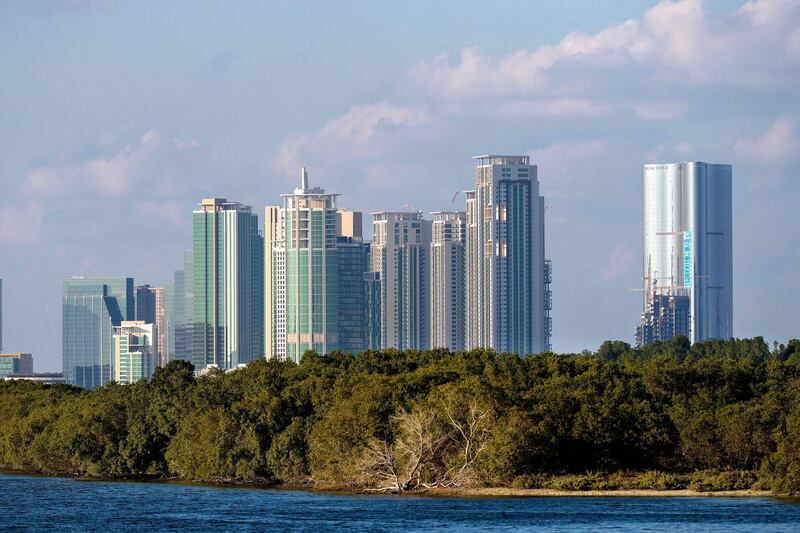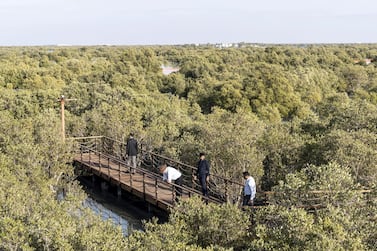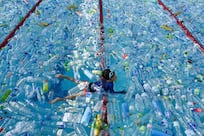In a recent column about "half-forgotten, half-overlooked, nooks and crannies of our thriving modern cities," I wrote a paean to one of my favourite places in Abu Dhabi. Perhaps I was a little overenthusiastic in the way I described this "tangled wood" but my intention was to try to communicate my love of wild places, even in the city, though I prefer, of course, places that are further removed from urban sprawls.
I was intrigued, therefore, to read recently of a plan to create “the first urban forest in Abu Dhabi,” as part of the For Abu Dhabi Initiative of the Abu Dhabi Department of Municipalities and Transport. Currently being planted on Reem Island, the forest, we’re told, will offer visitors “a self-sustaining wild forest where there will be genuine biodiversity.”
I welcome the planting of a few more semi-wild and tangled woods in Abu Dhabi that can be enjoyed by the public, even if they take a while to get established. Another favourite wood of mine, where you had to push through the undergrowth, disappeared a few years ago, replaced by a large school.
I wish the Reem Forest project well, despite being rather amused by the fact that its planner was quoted as saying: “I saw a bird at the construction site yesterday sitting in a ghaf tree, so this whole ecosystem is now kickstarted.” When native birds like laughing doves happily nest on people’s balconies or rooftops, I am not sure that a single bird sitting in a tree is particularly significant.
The Reem Forest is an attempt to try to give city-dwellers an opportunity to engage with nature, something that isn't so easy to do in manicured parks and gardens.
It is all very well to encourage people to take advantage of pleasant weather to get out into the desert and mountains but more efforts to promote wild, or at least semi-wild, spaces in the cities are also to be welcomed.
Away from the cities, many other projects designed to promote and to preserve the country’s environmental biodiversity are now being developed. They can be found both on land, like Dubai’s Al Qudra Lakes, and offshore, like the world’s largest artificial reef, being jointly planned by the Ministry of Climate Change and Environment and the Florida Keys National Sanctuary in the US, off the coast of Fujairah.
Most of the work is complemented by detailed scientific studies before the schemes are launched. There is more thought today not just about sustainability but also about the impact on the environment as a whole and on the native plants and wildlife.
In that context, we need to pay more attention to the deliberate or accidental introduction of exotic species, both of plants and wildlife that may compete with our local species or become pests.
The other day, a friend in Dubai drew to my attention his discovery of an alien animal not previously recorded in the Emirates, a tiny millipede, a group of species that has dozens of legs, sometimes even hundreds. This particular species, native to south-east Asia, probably arrived here accidentally along with imported plants. Over the course of a few months last year, its numbers seemed to be growing rapidly. An intervention by the local municipality might, one hopes, prevent it becoming widely established.
There have been other deliberate introductions recently to our wildlife. Indian palm squirrels, popular pets, were first recorded in the wild in Ras Al Khaimah in 2009, but over the last decade have spread throughout much of the country, with an estimated 50 being seen in a single park in Sharjah a few years ago. It may well be too late now to eradicate them.
In Australia, where palm squirrels have also become naturalised, the country’s National Vertebrate Pests Committee has described them as “an extreme threat”.
Other introduced species can have a direct impact on our native wildlife, both through hybridisation and through direct competition.
Birds like the white-eared bulbul were introduced a few decades ago and there are now tens of thousands of pairs breeding throughout much of the country. The competition they offer in terms of occupying habitat and potentially through hybridisation, threatens the long-term survival of our native, and closely related, white-spectacled bulbul.
Was it necessary, for example, to release thousands of alien Arabian partridges on Jebel Hafeet, or hundreds of ducks at the Al Qudra Lakes or the new lakes at the Expo2020 site?
As we move to preserve our native biodiversity, through scientific study and through initiatives like the Reem Forest, we need to be more cautious about how we introduce exotic species.
Peter Hellyer is a consultant specialising in the UAE's history and culture






